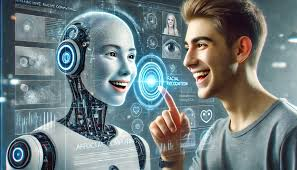Revolutionizing Multi-Camera Calibration with 3D Reconstruction
Understanding Multi-Camera Calibration
Multi-camera calibration is the process of aligning and synchronizing multiple cameras to work together seamlessly. This involves determining the intrinsic parameters (like focal length and sensor size) and extrinsic parameters (such as position and orientation) of each camera in relation to one another. Accurate calibration is crucial for creating coherent 3D models from the individual 2D images captured by each camera.
The Importance of 3D Reconstruction
3D reconstruction is the process of capturing the shape and appearance of real-world objects or environments and converting them into digital 3D models. This technology is crucial for various applications, including:
- Virtual and Augmented Reality: Creating immersive experiences requires precise models that replicate real-world environments.
- Robotics: Robots need accurate 3D maps for navigation and interaction in complex environments.
- Cultural Heritage: 3D reconstruction helps preserve and analyze historical sites and artifacts.
Advancements in Multi-Camera Calibration
Recent advancements in algorithms and machine learning have significantly improved multi-camera calibration techniques, leading to enhanced 3D reconstruction quality. Here are some key innovations:
Machine Learning Integration:
- Machine learning algorithms can analyze large datasets of camera images to automatically calibrate systems, reducing the time and expertise required for manual calibration.
Real-Time Processing:
- Modern processing techniques allow for real-time calibration and reconstruction, making it possible to create 3D models on-the-fly, which is crucial for dynamic environments.
Improved Depth Estimation:
- Enhanced depth estimation methods, such as stereo vision and structure from motion (SfM), provide more accurate spatial information, allowing for more detailed 3D models.
Robust Error Correction:
- Advanced calibration techniques can identify and correct errors in camera alignment, improving the overall reliability of the 3D reconstruction process.
User-Friendly Software:
- New software solutions have made multi-camera calibration more accessible, providing intuitive interfaces and automated workflows that enable users without extensive technical knowledge to achieve high-quality results.
Applications and Impact
The revolution in multi-camera calibration and 3D reconstruction is transforming various industries:
- Entertainment: In film and gaming, accurate 3D models enhance visual effects and create more immersive experiences for audiences.
- Healthcare: 3D imaging is vital for accurate diagnosis and treatment planning, particularly in fields like surgery and orthopedics.
- Smart Cities: Multi-camera systems aid in urban planning and management by providing detailed models of infrastructure and traffic patterns.
Conclusion
The advancements in multi-camera calibration technology are paving the way for unprecedented accuracy and detail in 3D reconstruction. As these technologies continue to evolve, we can expect even more innovative applications across diverse sectors, ultimately changing how we perceive and interact with the world around us. Embracing these advancements will be key to unlocking new possibilities in visualization, interaction, and understanding of complex environments.
For Enquiries: contact@computerscientist.net
Website: computerscientists.net
#3dreconstruction
#cameracalibration
#3dtechnology
#virtualreality
#computervision
#3dmodeling
#techinnovation
#robotics
#motioncapture
#ai
#machinelearning
#depthperception
#augmentedreality
#immersivetech

Comments
Post a Comment